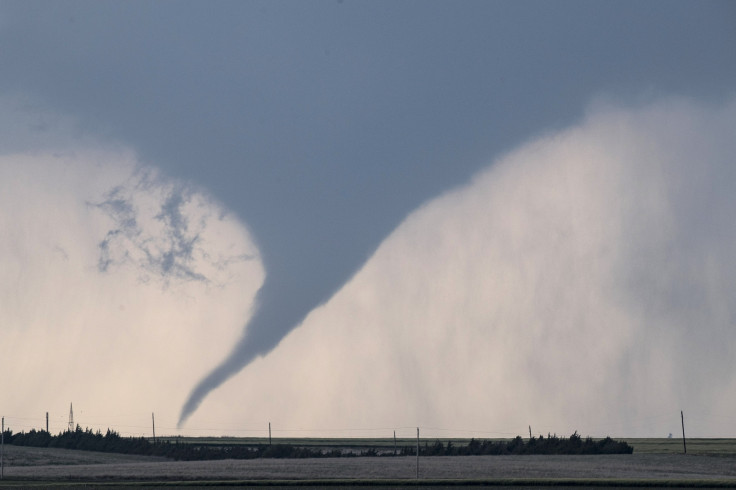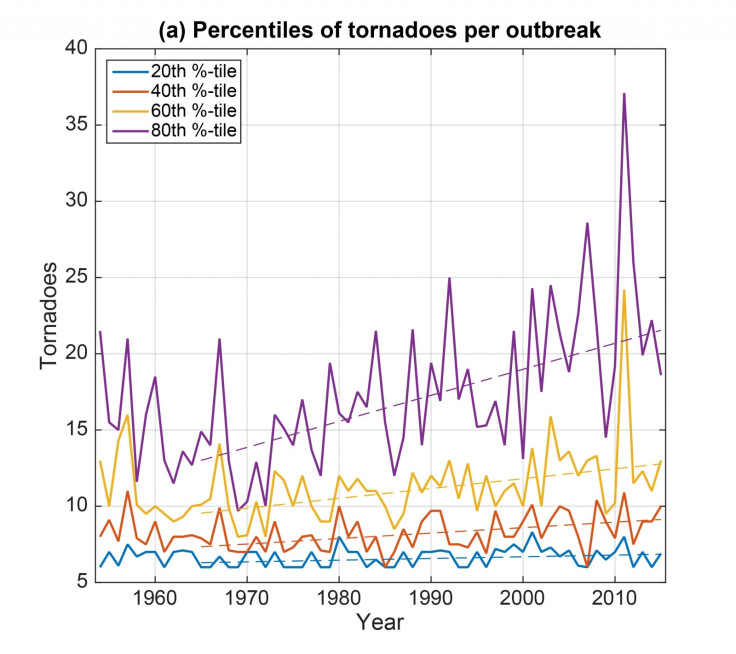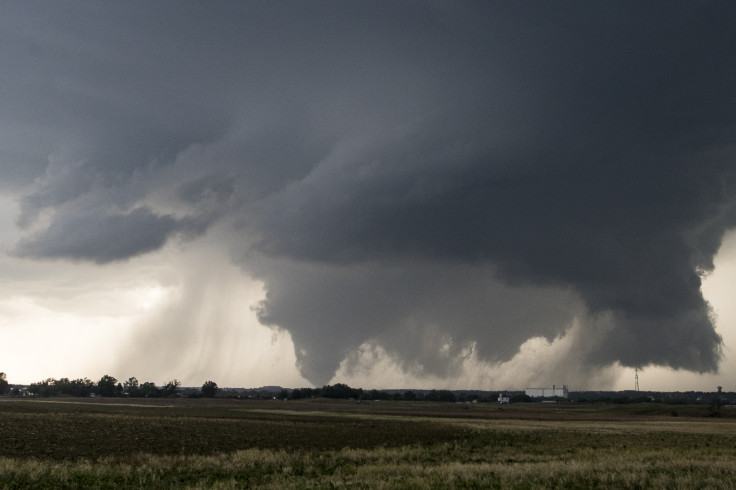The size of extreme cluster tornadoes hitting the US has doubled in 50 years – and no one knows why
The overall number of tornadoes hasn't increased, but they're coming in bigger, more dangerous clusters.

The average number of tornadoes in the largest cluster outbreaks is now almost double what it was in the 1960s, a new study finds. The researchers say that current climate change models can't account for the trend, but don't rule it out as a cause.
The total number of tornadoes hitting the US has not increased overall in the past 50 years, but the tornadoes are occurring in more concentrated outbreaks, according to a paper published in the journal Science. The effect seems to be confined to the largest clusters, with no noticeable trend in the smaller outbreaks of tornadoes.
Is it due to climate change?
There are two main factors that affect tornado formation: the tendency of air to rise – which often happens when you have warm, moist air near ground level – and wind shear, which is wind blowing in different directions at different altitudes.
Increasing temperatures due to climate change would increase the tendency of air to rise, but that wouldn't be expected to increase wind shear.
The authors of the study found that wind shear was the main factor in increasing the number of tornadoes in large cluster outbreaks.
"We're not saying it isn't climate change, it's just not what we expect from our current understanding," study author Michael Tippet of Colombia University told IBTimes UK.
"That leaves two possibilities: there's a lot we don't understand about climate change and this is part of it, or this variability is not driven by climate change."
It will take more studies to find out which is the case, Tippett says.

Bogdan Antonescu, a severe storm researcher at the University of Manchester, welcomes this open question.
"It's very interesting because it's opening up the question of whether it's climate change or multi-decadal variability – natural variability," Antonescu says. "We need to understand more about how we deal with thunderstorms and climate change."
What's the cost?
Tornadoes killed 110 people in the US in the 10 years leading up to 2015, according to the National Oceanic and Atmospheric Administration.
In the first half of 2016, the estimated insured losses due to severe thunderstorms were $8.5bn.
"An assessment of changing tornado outbreak size is highly relevant to the insurance industry," says Kelly Hereid, a researcher at the insurance firm Chubb Tempest Re R&D.
"Common insurance risk management tools like reinsurance and catastrophe bonds are often structured around storm outbreaks rather than individual tornadoes, so an increasing concentration of tornadoes into larger outbreaks provides a mechanism to change loss potential without necessarily altering the underlying tornado count."

© Copyright IBTimes 2025. All rights reserved.






















